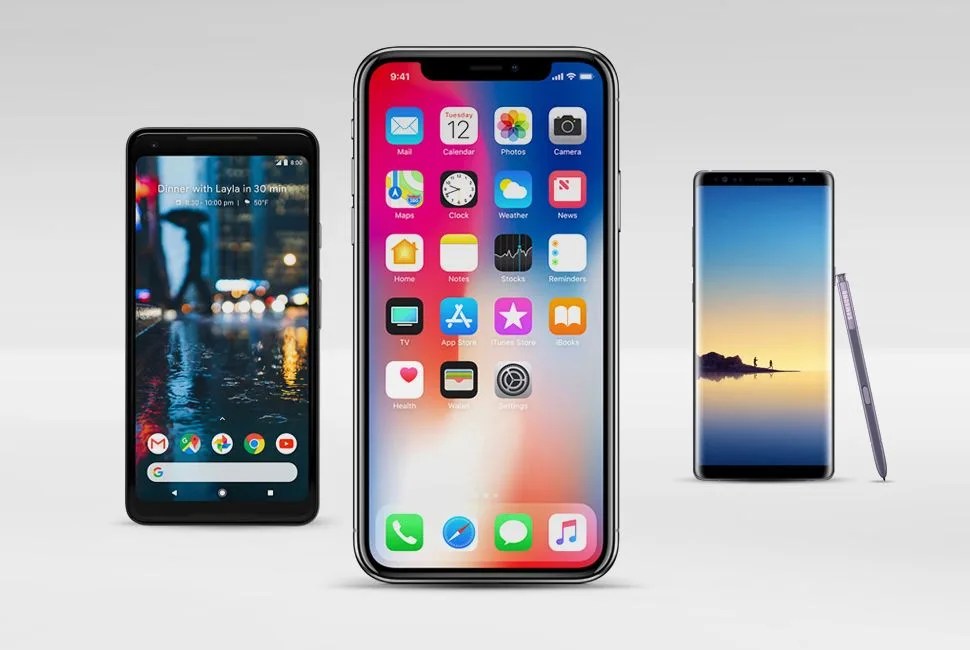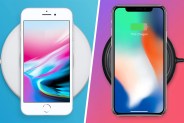Google’s new flagship, the Pixel XL 2, is in a similar boat with its screen, which also happens to be manufactured by LG. There are widespread reports circulating of visible burn-in on the device after just weeks of use. We’ve seen this on our own review unit. Others have also noticed “grit” when performing certain tasks, like web browsing, on lower brightness levels. And despite being the best offering from Google, the Pixel 2 and 2 XL also don’t offer a feature that’s now table stakes in the Android world: wireless charging.
Even though the iPhone X still isn’t out yet, several of its design choices rightly deserve scrutiny before reviews even hit the web. For starters, the flagship ditches the proven and convenient technology of fingerprint scanning in exchange for Face ID. Apple’s new technology will probably work extremely well and make more sense than Touch ID in a variety of situations. But it’s also very easy to envision scenarios where putting your finger on a button is a better method for unlocking your phone than holding it up to your face.
That’s why a flagship like the X should have included both options. Apple employs thousands of brilliant people who know this. Their design and engineering teams almost certainly tried everything they could think of to integrate both features. They just couldn’t get it to work, at least in a manner that was cost-effective or feasible for mass production right now. Rather than acknowledge the move as a practical design tradeoff, Apple decided double down on positioning, spinning Touch ID as the past and Face ID as the future. I believe they’ll eventually figure out how to make both technologies work within the same device (assuming they’ve haven’t already). I’d also wager the rhetoric around Touch ID will change accordingly.
Then there are the nerdier conversations around the X’s screen size. Owners of the smaller iPhone will feel it’s a noticeable upgrade in size. But as many, including Sam Byford at The Verge , have pointed out, it won’t be the same for Plus users, even though the iPhone X’s 5.8-inch screen is technically bigger than the 5.5-inch display found on iPhone Plus models. The reality is the X will actually display less content at once. That’s because of several factors, ranging from the controversial “notch” at the top of the screen that houses the phone’s advanced face-scanning array to the display’s curved corners; both of these limit the amount of screen real estate developers can use for apps. As with the launch of the Plus, the user experience will definitely improve for early adopters as more apps are updated to support the iPhone X’s new display size, yet the issue of the notch, particularly when using the phone in landscape mode, will always persist.
This Friday, with a shiny new phone in my hand and a few full nights of sleep, I know my mood will soften. I probably won’t be alone. Maybe Apple’s engineers will prove me wrong once again and I’ll evolve to love things like Face ID and be better for it. But my gut says all of us who hustled to beat more prudent smartphone buyers will still craft at least a small list of excuses for any frustrations we encounter. Or, even worse, we’ll search for solace in the vanity that we’re part of the “lucky” few holding it first and convince ourselves that the iPhone X is perfect. And that’s not how anyone should feel or act after spending $1,000+ on a totally non-essential purchase.
Companies can claim these types of trade-offs have always been the price of progress, early adoption, or some amalgamation of the two. But as consumers who are being asked to pay more for a supposed new tier of excellence in mobile technology, we really shouldn’t have to keep accepting one step backward as the price of a new step forward, or in some cases, just sideways. We deserve to get the latest along with all of the greatest, and 2017 just didn’t deliver.

